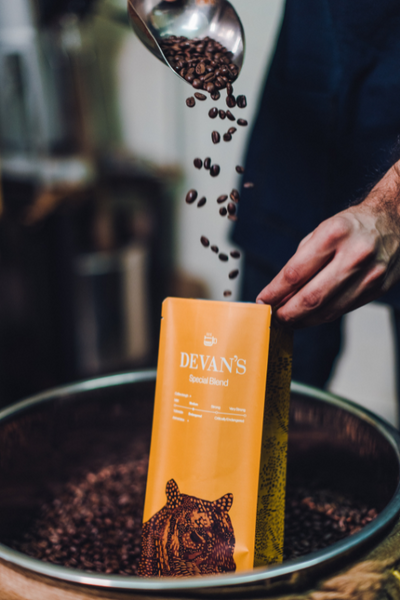Ground coffee is produced after whole coffee beans are ground either manually or using an electric coffee grinder. The purpose behind grinding the coffee beans is to extract as much flavour as possible from the beans. These ground coffee beans are then added to your coffee maker of choice.
Types of Ground Coffee Available
Buying ground coffee beans can be a little confusing. You will be given a selection of grind sizes to choose from. But knowing how to match up your grind type with your coffee preference can do the trick. So, let us learn about some basic coffee grinds and how they can be used. You can use these guidelines to adjust the fineness or coarseness of your coffee grinds as per your preference.
-
Coarse grind: The larger coffee grind is best for brew methods that include immersion in water, like French Press. It has a larger coffee particle size. It can be used for making Cafetiere, which requires a brewing process called ‘immersion brewing’ to extract flavour. This method cannot be done using fine ground coffee as you would experience bitterness due to over-extraction.
-
Medium grind: This is a sandy-textured coffee grind with medium-sized particles. It is one of the most popular grinds ideal for drip-brewing coffee makers. It is designed to work with a brew method that uses gravity to extract coffee through water. It is perfect for brew methods like V60, Filter coffee and Aeropress.
-
Medium-coarse grind: This is a slightly smoother but fairly large coffee grind that is ideal for most pour-over brewers like Chemex.
-
Medium Fine grind: This is silky sand but does not stick together. It is an excellent choice for most brewers.
-
Fine grind: This is a silky grind that is finer than table salt. It is the perfect choice for espresso machines, Mocha pots, and Turkish-style brew as it packs well together.
Does the Size of the Coffee Grounds Affect the Taste?
The grind size affects the taste of the coffee once it comes in contact with water. How coarse or fine the beans are ground impacts how fast the water will pass through them, thus determining the strength of the eventual coffee.
-
Coarse ground: if the coffee beans are coarse, the water will move quickly between the pieces, thus extracting only some of the flavour. So if you want a full balance of flavour, it is better that you brew these grounds for a bit longer so that more flavour is extracted.
-
Fine ground: Fine ground means that coffee grinds are fine and packed more closely. Since water takes longer to pass through all the ground particles, it extracts more flavour. Hence, when brewing an espresso, you only need a fraction of the time you would use for a French Press to get the full flavour. Though fine grinds let the water extract quite a bit of flavour, it may not be ideal when it comes to making certain brews. This is because certain coffee brewing systems need different types of coffee grinds. It also comes down to personal taste.
Conclusion
So these are two various types of coffee grinds you can choose from. Make sure you select the one that fits your preference and brew method.
